Wildflowers are supposed to be easy to grow. At least that is the common thought. But not all of them are quite so easy-going.
Some wildflowers can be downright finicky, preferring less than ideal soil. Don’t compact your soil just for their sake, simply choose another plant that is better suited for your space.
On the other hand, other wildflowers will grow even without your presence or interaction. Those are the ones we are seeking out today.
Think you don’t have enough land to plant wildflowers?
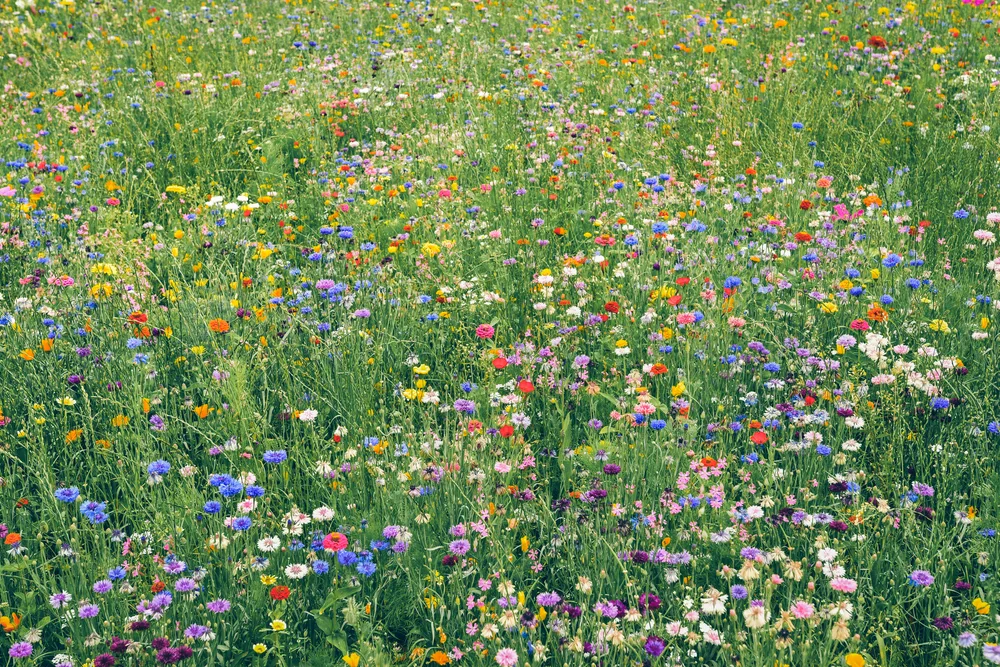
If you aren’t quite ready to turn your entire lawn into a wildflower meadow, how about cultivating a small wildflower garden instead?
Or plant a wildflower container garden. There are more details about this below.
How To Start A Wildflower Garden
If you are thinking that wildflowers all grow in full sun, think again.
Often times you will find that many wildflowers are actually growing in the shade, or semi-shaded environments. Many of them thrive where the grass is thin and the soil is exposed for new seeds to germinate.
When you start to think in terms of forest gardens, or woodland gardens, the opportunity for wildflowers only increases. So does the joy of growing them!
Your garden doesn’t need to be bursting with wildflowers to enjoy them.
It’s enough to get two or three species established first, then add more, gradually, as the seasons continue. This allows you to determine what is working and what isn’t.
In the beginning, you get to choose whether to add shade-loving or sun-loving plants first. Decide which area is more valuable to you.
Which place do you spend more time in? Where is your garden in need of a little ground cover?
Head to those areas first, then decide which plants are coming to your rescue.
20 Easy-Going Plants For Your Wildflower Garden
So, where are your wildflower seeds, or transplants, going into the ground?
In the sun, or under your favorite tree? Along the hedgerow where no mowing is necessary? Or beautifying the border of your tool shed?
How about planting a mixture of both, for what is a yard covered with green plastic turf?
This list of easy-going wildflowers is by no means complete, it would take an entire book (dedicated to regional wildflowers) to get the job done right.
Included are many wildflowers that you may have already heard of and some that are longing to be observed.
Shade-loving wildflowers
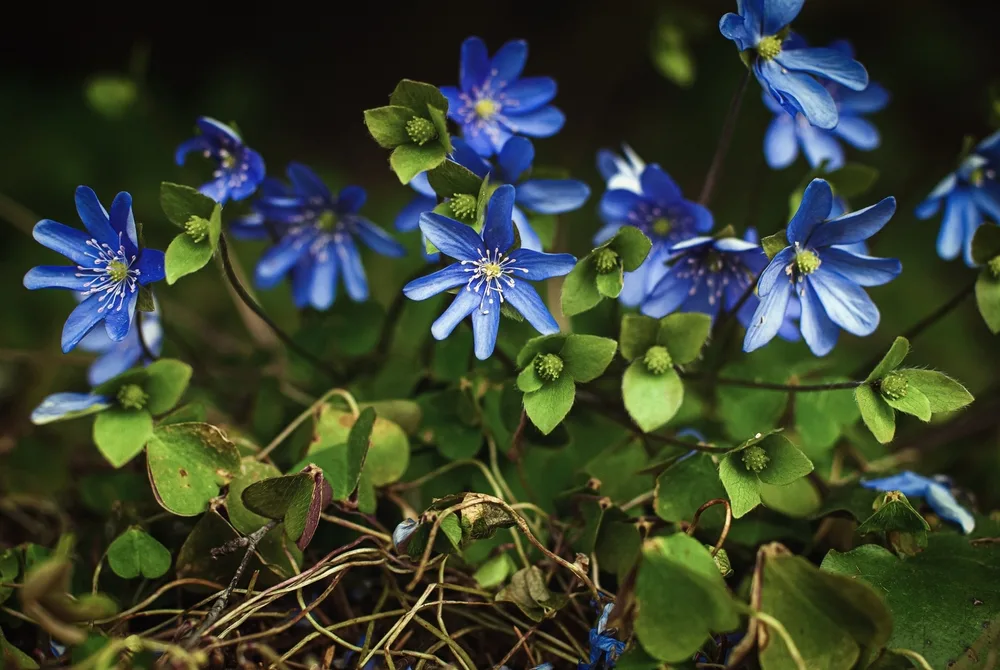
Most people are raised with the assumption that gardens grow better under the sun.
This is not necessarily true. There are plenty of shade-loving vegetables out there which bask in some cooler hours of dappled light.
Many wildflowers also prefer the forest edges where the line between full sun and shade is blurred.
1. Columbine (Aquilegia canadensis)
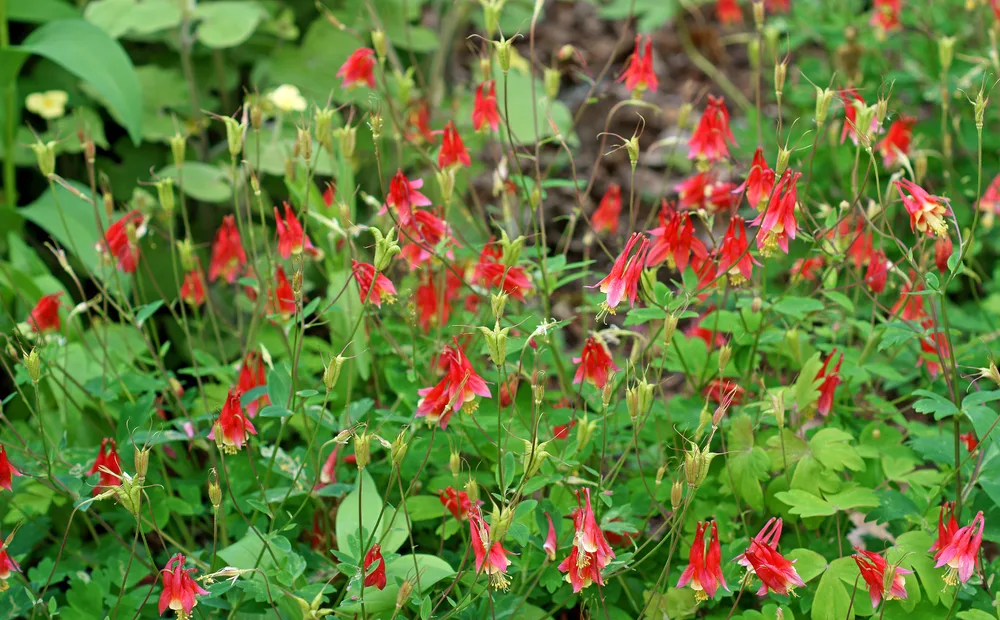
All columbines are self-seeding, giving way for you to do nothing, but sit and wait for them to bloom. Or go and work in your vegetable garden in the meantime. A gardener’s life is never idle.
Native to woodlands, columbines naturally prefer a bit of shade, though there are some alpine varieties that perform better in full sun. So choose wisely.
Flower colors range from bright blue to purple, red and orange, all the way through pink and yellow. They bloom in spring and summer and are deer resistant. What more could you desire from a wildflower?
Did we mention how beautiful they are too?
2. Dutchman’s Breeches (Dicentra cucullaria)
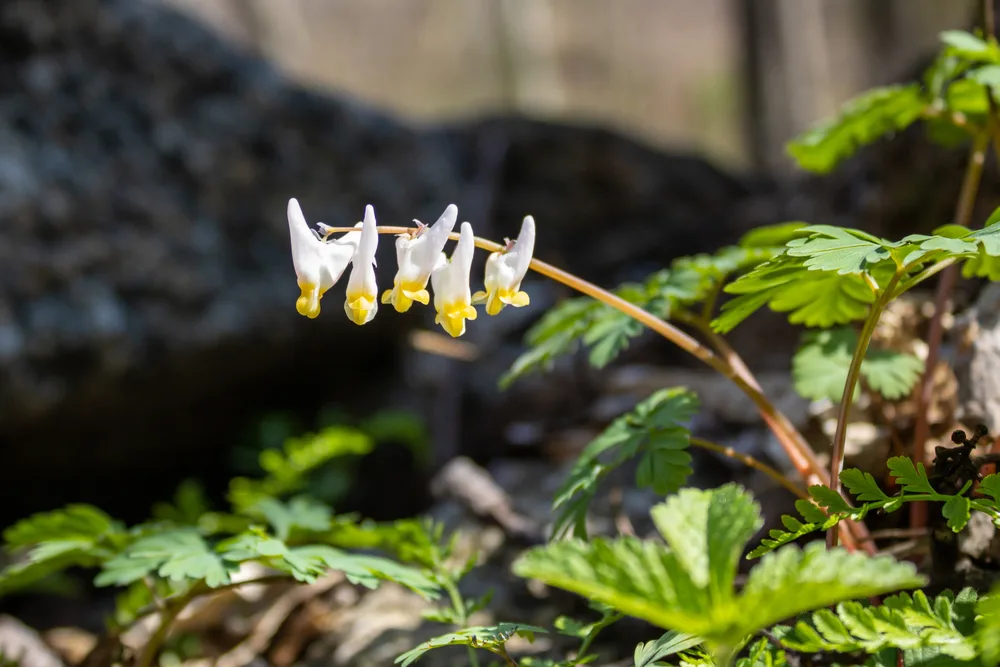
Looking for a special treat to gift the humble bumblebees in your yard? Dutchmans’s breeches may just be what you are looking for.
Because they flower so early in the season, even before the trees have leafed out, bumblebees are the pollen-gathering creatures that they will usually attract.
But, if you really want to care for them, the breeches, that is, you’ll have to be sure to leave enough leaf litter on the ground. Dutchman’s breeches can thrive under full shade, yet partial shade is their preference.
Best of all, they will take care of themselves, leaving you with more time for, you guessed it – yourself.
Don’t you just adore these low-maintenance plants?
3. Hepatica (Hepatica americana)
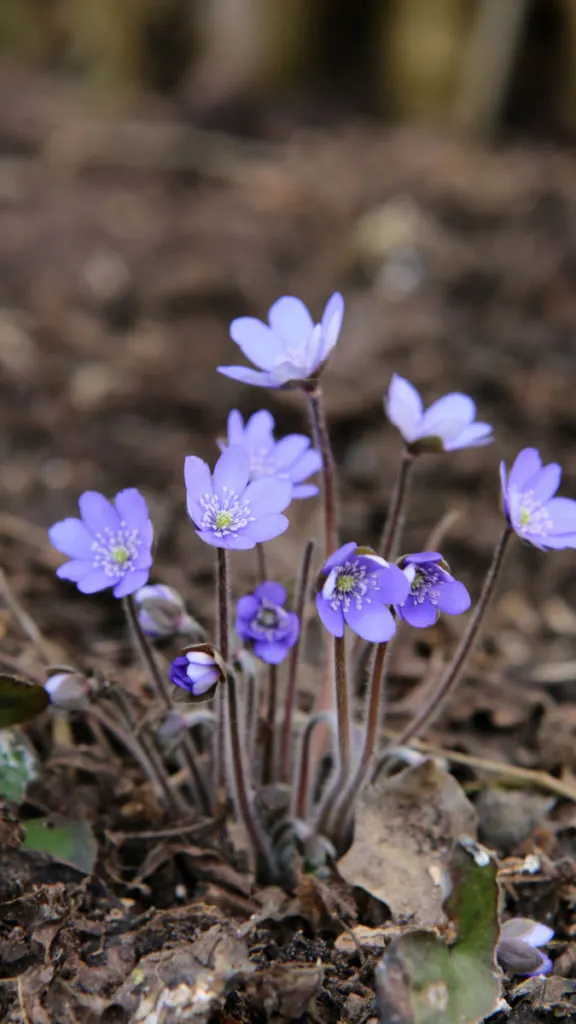
If you don’t know it by the name hepatica, surely you’ve heard it called American liverwort, liverleaf or Anemone americana, right?
Or perhaps you are one of the many who simply recognizes plants by sight.
For this one, you’ll have to bend down to the ground, as it only rises up 6-9″ from the earth. If left in the same place, undisturbed from year to year, it makes a lovely spring carpet with delicate light blue, pale pink, white or purple flowers.
Hepatica is very undemanding, growing well in humus-rich soils under partial shade. For it to truly thrive, make sure to apply a generous layer of leaf mold in fall.
4. Jack-in-the-pulpit (Arisaema triphyllum)
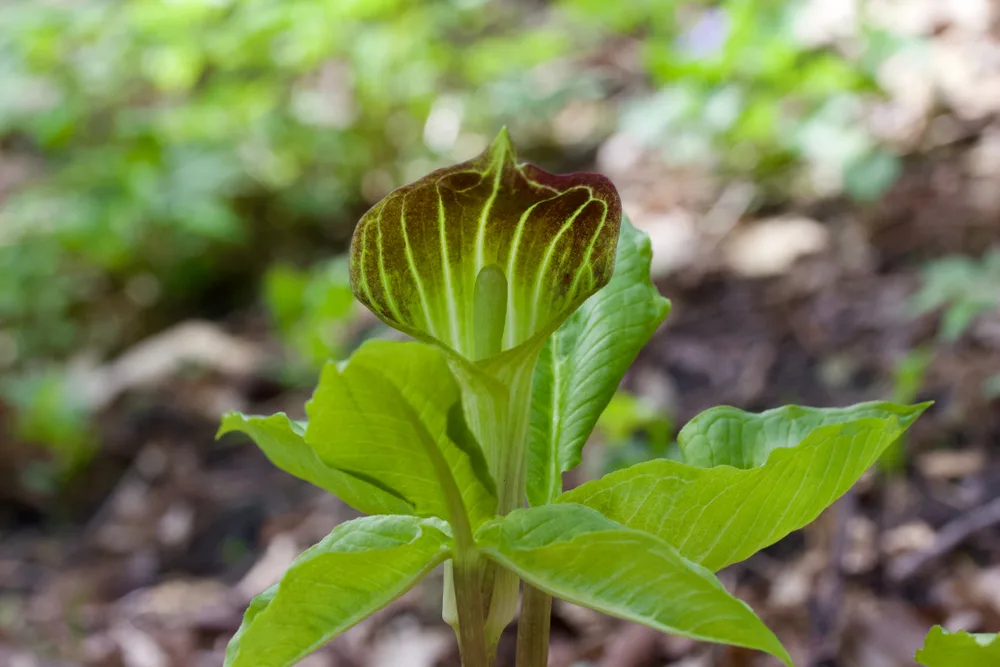
They say that Jack-in-the-pulpit is easy to grow in the right location. The truth is, this can be said for many plants, so don’t fear its likes and dislikes.
If you have a forest garden, or would like to start a forest garden, Jack-in-the-pulpit is a unique plant to have growing in your space. Native American Indians harvested the roots for food and you can too, yet you need to know how to process them safely. Being an experienced forager definitely helps in this case.
Otherwise, you can simply enjoy their presence, which brings about some tropicalesque beauty to your landscape.
Give them moist soil, also with a thin layer of leaf mold and your job is done.
5. Solomon’s Seal (Polygonatum biflorum)
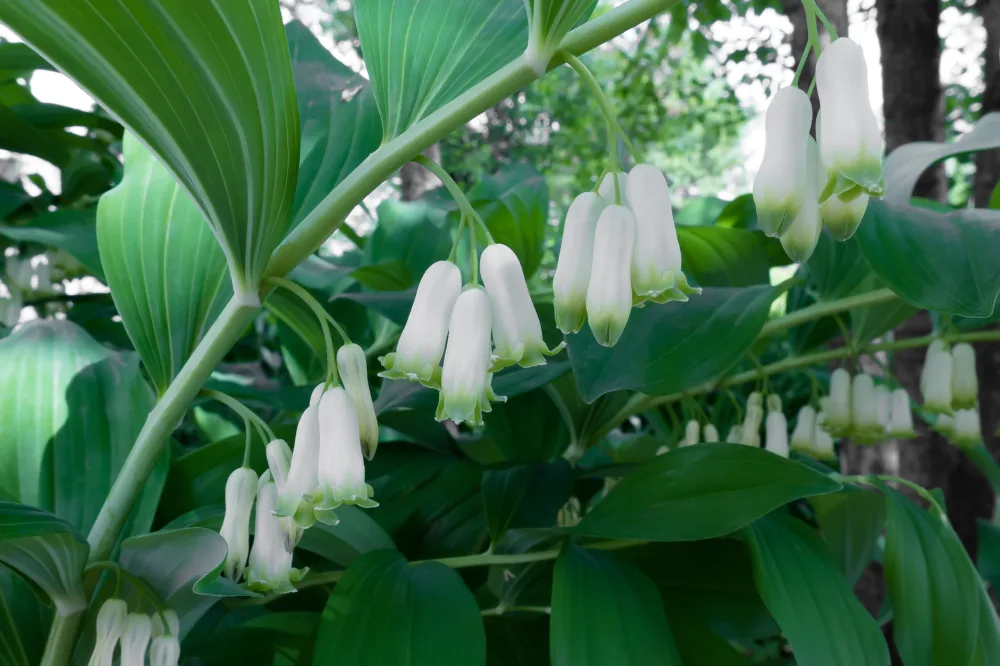
If you are looking for a companion to accompany your astilbes, hostas, ferns, pulmonaria and wild ginger, they will certainly find a friend in Solomon’s seal.
Thinking with a landscape designer’s hat, Solomon’s seal provides a dashing spring backdrop with green wands that dance in the breeze. Later on, it offers flowers, followed by berries which start out green, then turn to a purplish-blue and eventually black.
The berries are poisonous to humans, loved by birds. That’s the way nature is, leaving specialized gifts for every creature.
In a woodland garden setting, Solomon’s seal is easy to grow. So long as it has partial shade for its leaves, it can set its roots in a soil rich in organic matter and it receives water in times of extended drought.
Related Reading: 15 Colorful Trees & Shrubs to Attract Stunning Birds To Your Backyard
6. Violets (Viola sp.)
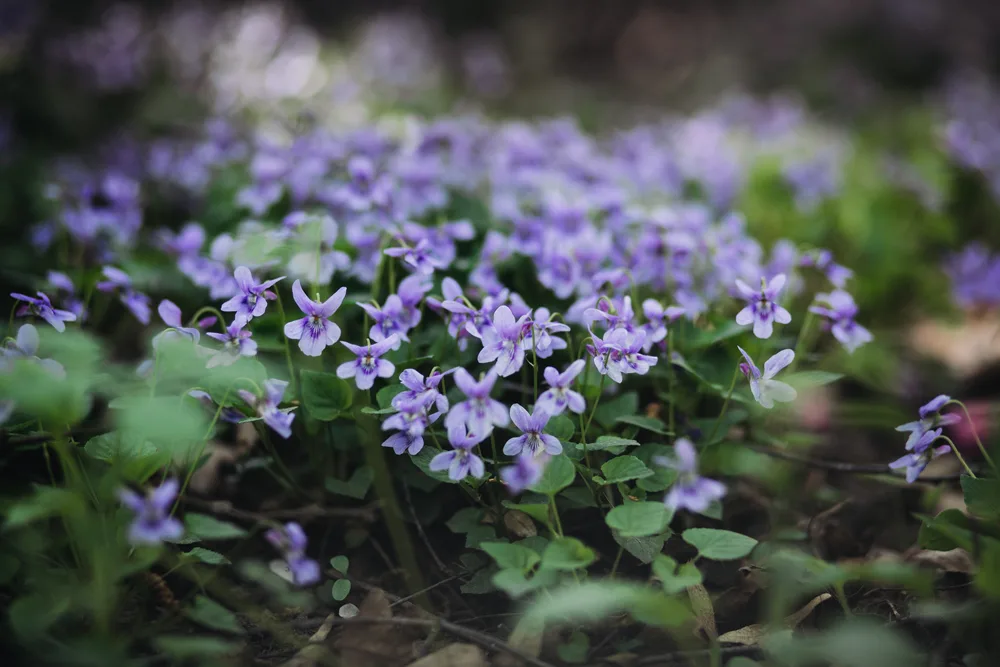
Plant it once and enjoy the blossoms for decades to come. That’s what we love so much about perennials of any kind.
Violets are easily recognizable wherever you go and with more than 400 violets in the genus Viola, you are sure to find one (or more!) for your shade-garden needs.
If you don’t know where you can forage for flowers to make homemade violet syrup, you’d better start thinking about where to plant them in your shady backyard.
No need to worry about how to propagate violets, as they will naturally reseed for years, all on their own.
Don’t forget to add the delicate flowers to your salads, cakes and pastries. Of course, be sure that you always collect from unsprayed sources.
You’ll have noticed by now that some of the plants on this list of easy-going wildflowers are poisonous. Others are remarkably delicious. Learn how to forage for nutrients and slowly, but surely, the diversity of your diet will astound you.
Related reading: 25 Edible Wild Plants To Forage For In Early Spring
7. Wild Ginger (Asarum canadense)
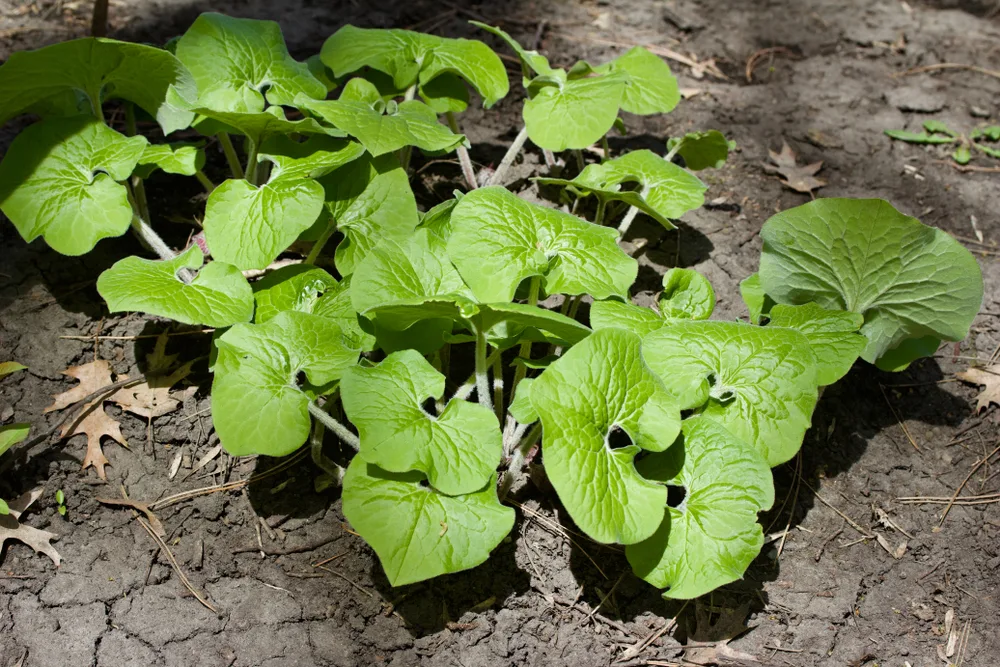
Not to be confused with the ginger root you purchase from the store, or grow in a container, wild ginger isn’t exactly edible. Or rather, it is mildly toxic, yet some people still consume it as a spice, just as our ancestors did. If you’d like to forage for wild ginger, this article explains the ins and outs you need to know before ingesting it.
That being said, wild ginger is truly a wonderful little plant, even if it takes a while to get established.
Wild ginger is a low-growing and sprawling plant that is excellent as a woodland groundcover. The kidney-shaped leaves are dark green and glossy, with tiny flowers which hide underneath.
Wild ginger gets bonus points for being deer resistant and doing double duty as erosion control on difficult to plant slopes. It can also be planted in containers, in shady places to beautify your outdoor spaces.
8. Wood Anemone (Anemone quinquifolia)
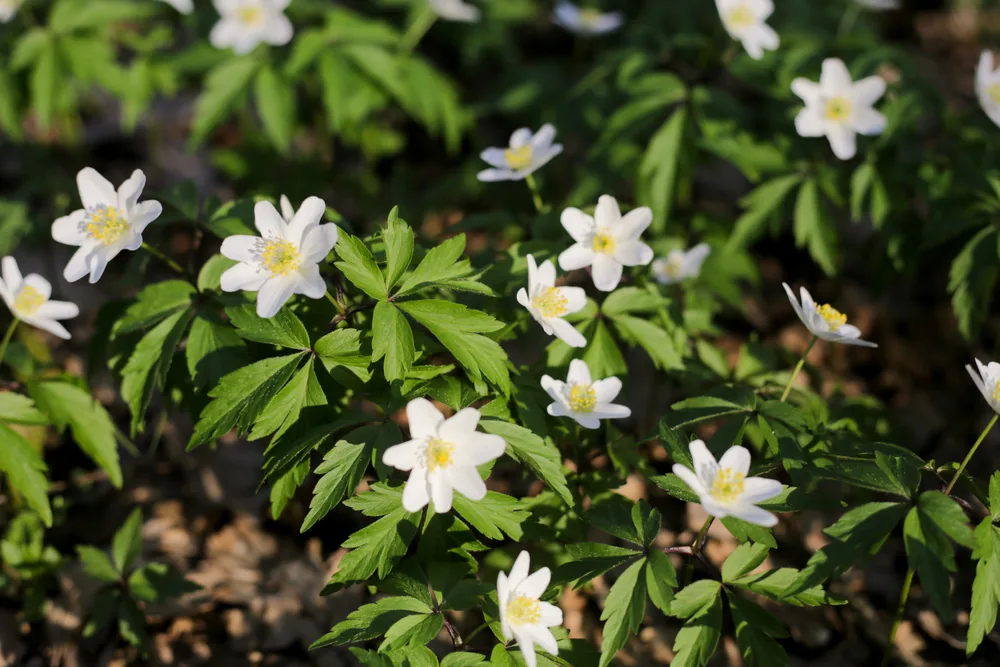
Sometimes we choose to grow wildflowers for their grace alone. Windflower is another way to refer to this pretty plant which grows in deep to partial shade.
It is the perfect addition to shaded edges of ponds or creeks, or tucked under the shrubs in your hedgerow.
Growing not more than 10″, wood anemone is a cheerful groundcover that grows unattended in organic-rich soils. Deer resistant, pest and disease-free, it is a wonderful choice for any woodland garden.
Do take care when weeding/removing it, as the sap may irritate the skin.
9. Woodland Phlox (Phlox divaricata)
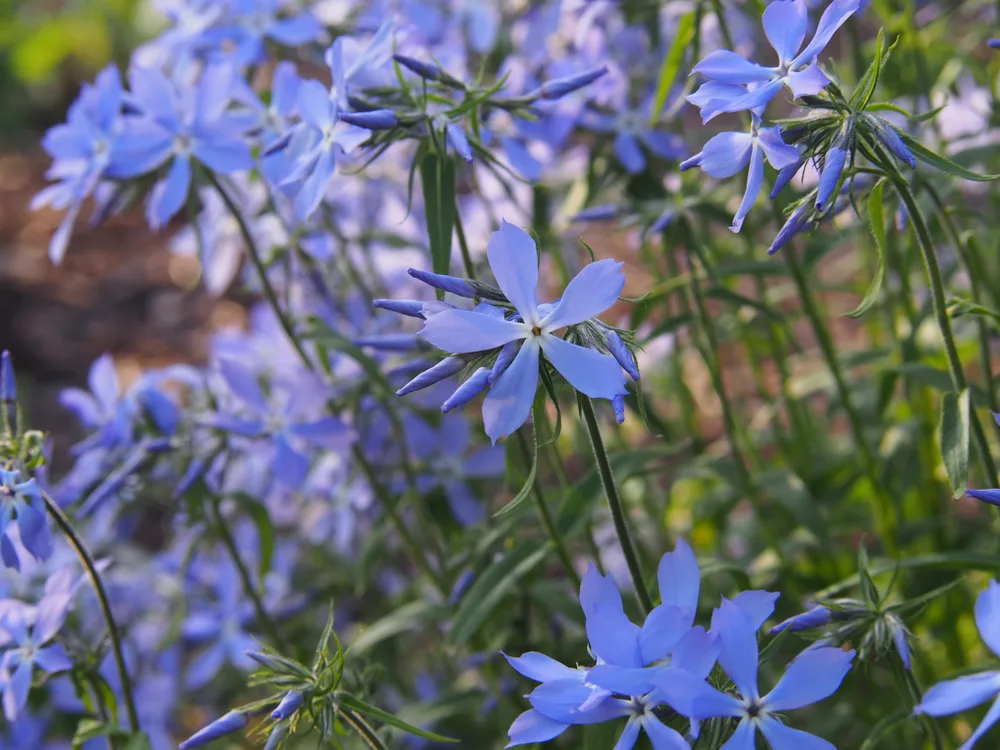
You won’t be wanting to plant phlox in deep shade, though partial shade to full sun it can handle. It is perfect for those out-of-the-way places where the amount of sunlight changes with the seasons.
Why plant phlox? Why not? It is:
- low maintenance
- wonderful at attracting butterflies and hummingbirds
- good for container planting
- suitable for cut flowers
- a perennial
From creeping varieties to those that grow more than 4′ tall, there is a variety of phlox for every garden.
Sun-loving wildflowers
It is always nice to have a mixture of sun and shade in your backyard. Of course, this assumes we have larger trees or shrubs to work with, possibly a larger plot of land.
Yet, the classic version of a meadow is better known for its location under the sun and the wildflowers that thrive in the heat and bright light.
Here are 11 easy to grow wildlflowers that will dazzle in the sun.
10. Aster (Symphyotrichum sp.)
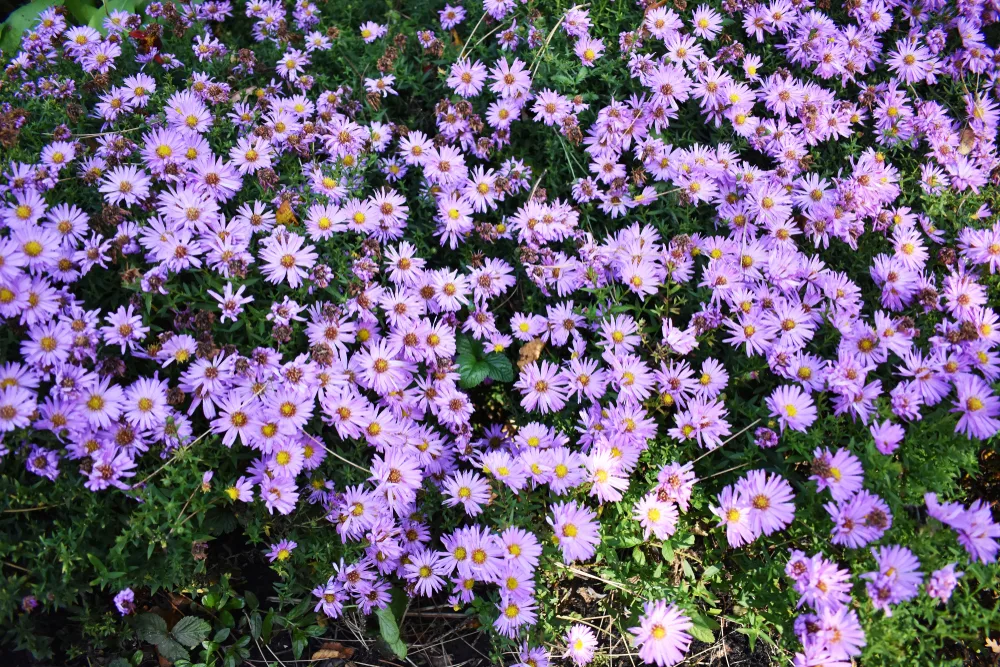
If you are searching for another easy-going perennial for your wildflower garden, you might want to think about planting a patch of asters.
As far as colors go, the flowers can be blue, white, pink or purple, depending on the variety. Height-wise, you can expect anything from 1 to 6 feet. This allows for low-growing varieties to unexpectedly catch your eye, as well as swaying stems which proudly announce their presence.
A few species begin to blossom in early spring, the rest bloom throughout the summer and into early fall.
Asters are low maintenance and they make a beautiful cut flower that lasts 7-14 days in a vase. If you have space to include them in your wildflower garden, they are a must.
Plant them directly in the soil, or toss some seeds into a pot, as long as you can provide access to the sun and well-draining soil, they will grow.
11. Black-Eyed Susan (Rudbeckia hirta)
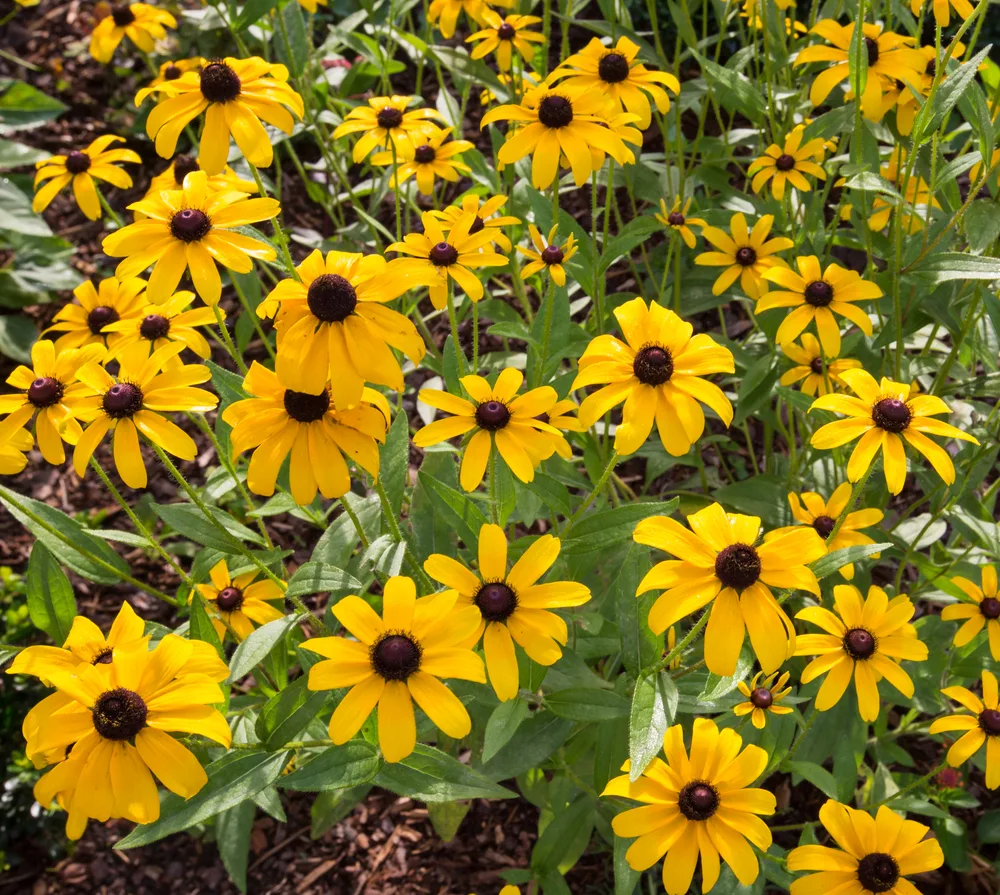
If you are familiar with echinacea, chances are great that you’ll already know about black-eyed Susan’s too.
They are among the most prepossessing of all meadow flowers, with their bright yellow petals surrounding a dark center.
If you are interested in planting more than the basic species, know that there are several varieties of black-eyed Susan. This includes ‘Autumn Colors’, ‘Goldstrum’, ‘Prairie Sun’ and ‘Radiance’.
It’s worth noting that deer and rabbits don’t make a habit of eating it, due to the coarse hairs on the leaves. All around, they are a stunning plant.
12. Blazing Star (Liatris spicata)
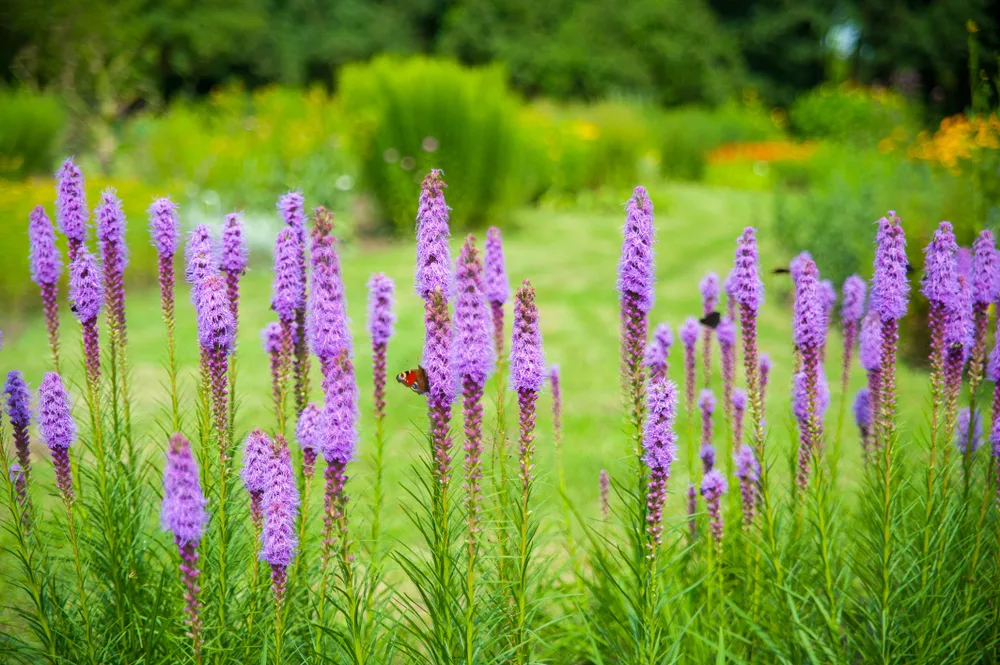
One of my favorite wildflowers is the blazing star. To be honest, I love it for its looks alone. Like an enormous purple fairy wand, ready to transform the land with the next bigger breeze.
As a stand-alone plant it is spectacular, but when you combine it with Russian sage, Shasta daisies and artemisia it really creates a magnificent atmosphere.
Grow it as a cut flower or a dried flower. Just plant it and see how pretty as a picture it is. You might even want to take a photo and frame it.
Blazing star gets bonus points for tolerating drought and clay soils. If you haven’t found a plant that can tolerate those two challenging conditions, Liatris is definitely worth a try.
13. Blanket Flower (Gaillardia sp.)
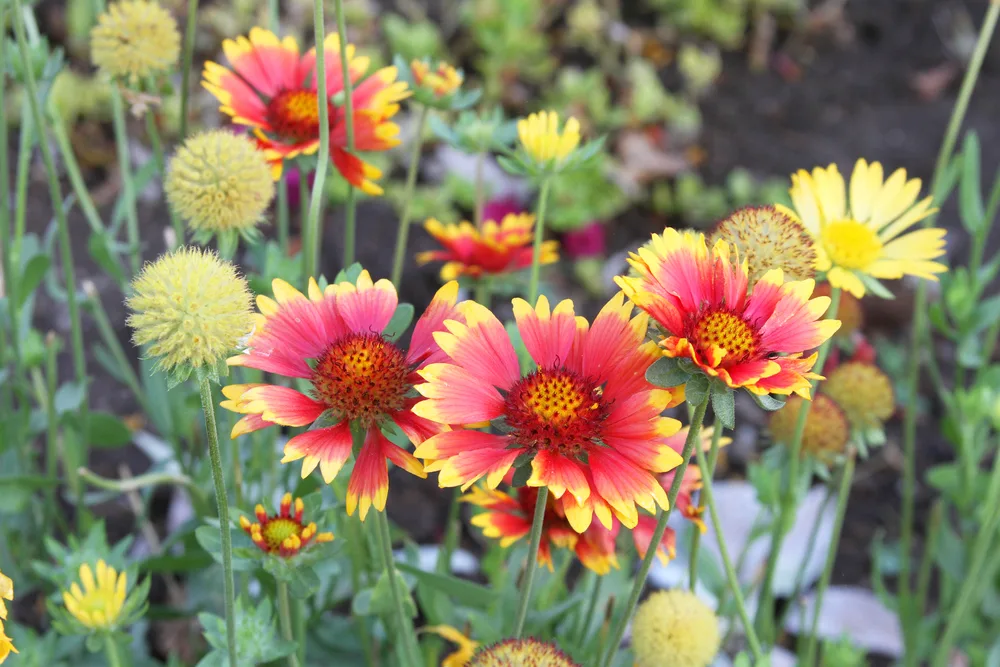
Do you want to grow a flower that exceeds your expectations?
Blanket flowers are just what you are looking for. They bloom and bloom, then they bloom some more.
Grow them in containers to set in cheery places, or plant them directly in the garden and go out to visit them. They will surely enjoy your company, even if you bring them into your home as cut flowers.
Blanket flowers are drought tolerant, deer resistant, fairly low-growing (1-3′) and come in a wide range of colors: purple, red, orange, yellow and white.
There is a blanket flower for every corner, nook and cranny of your garden.
If your gardening goal is to attract birds, know that they will do that too. Goldfinches will love to feast on the seeds come fall and winter.
14. Corn or Common Poppy (Papaver rhoeas)
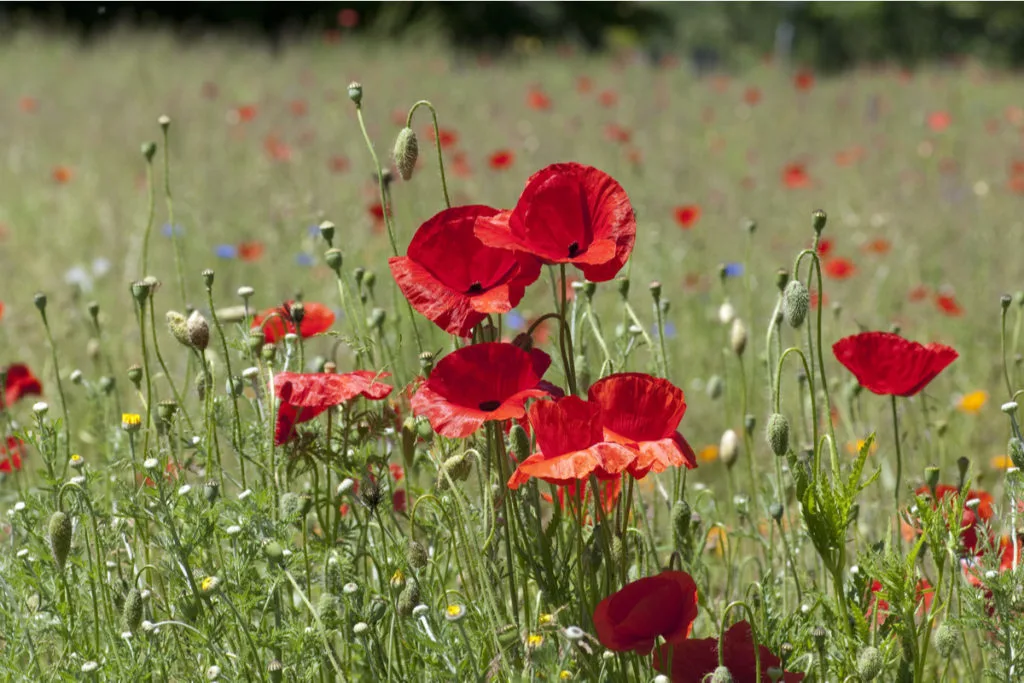
No, we aren’t talking about the controversial breadseed poppies here, though there are several reasons you should be growing them too.
The corn poppy is an annual which most everyone recognizes, but few people know is edible. Yes, you can eat a corn poppy.
Common poppies will grow in an array of soil conditions, with seeds being able to lie dormant in the soil for up to 80 years. When basic growing conditions are met, all you need to do, is let them grow. Because they are self-seeding annuals, you can plant them once and forget about them, similar to perennials – only they are propagating by seeds, not by roots.
Corn poppies grow well in planting zones 1-10, leaving you with a good chance they will grow in your garden too. Just make sure that the soil is not too rich, for they tend to grow even in low-nutrient soil.
15. Joe-Pye Weed (Eutrochium purpureum)
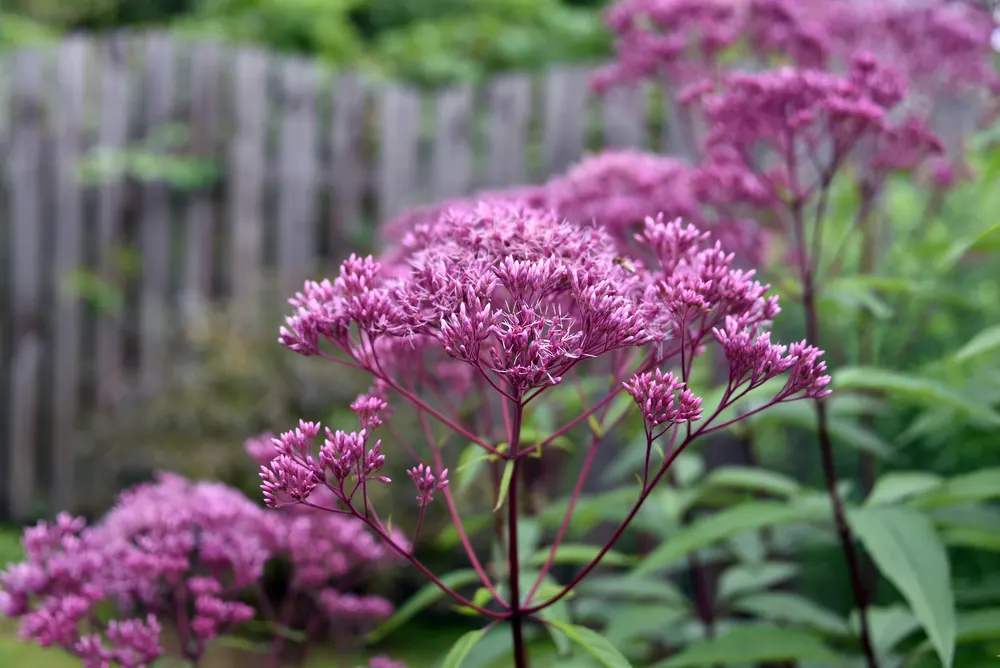
When your garden deserves something out of the ordinary, it is time to grow Joe-pye weed.
Before planting, you’ll find it useful to know that they can grow to great heights, given optimal growing conditions. They can reach anywhere from 3 to 12 feet, making them an excellent choice as a background plant. But, don’t squeeze them in a tight corner, for they need space to grow wide as well.
The purple flowers have a faint vanilla scent which attracts butterflies and other pollinators. It tolerates full sun, but can also grow in partial shade, particularly if the climate is hot. Overall, Joe-pye weed is an easy-growing wildflower that will provide an alluring accent in your backyard.
16. Purple Coneflower (Echinacea purpurea)
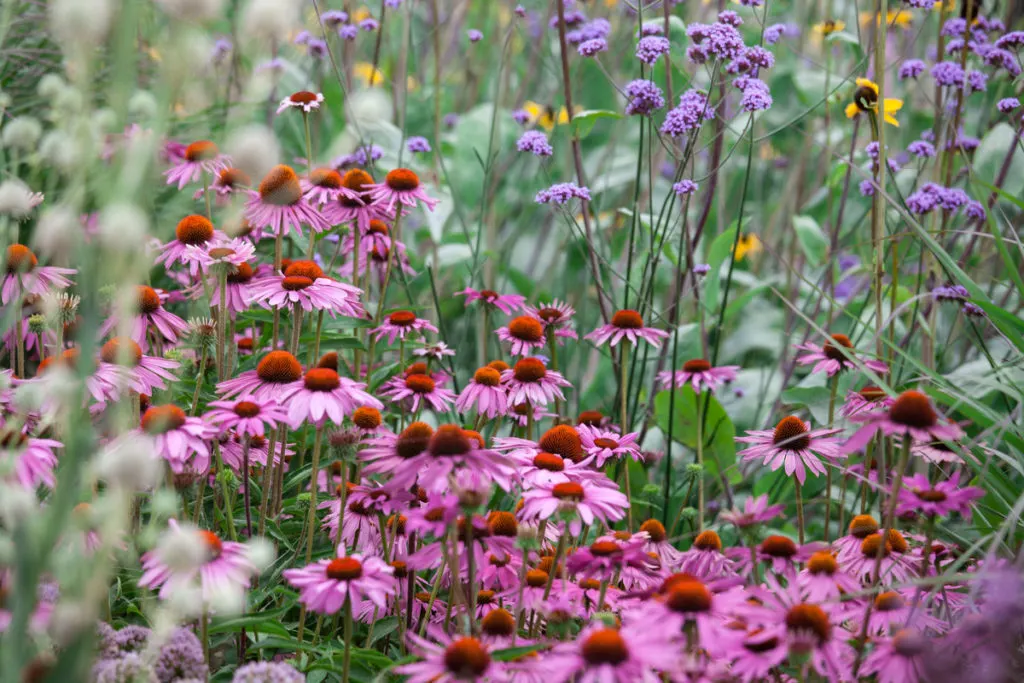
There are several reasons echinacea should be grown in every garden. Or as it is more commonly known, coneflower.
Coneflower grows easily in USDA zones 3-8, it attracts butterflies and birds, plus it has healing properties that help protect the body against colds and viruses.
Not to mention the fact that it is drought resistant and shade tolerant too.
It is, perhaps, one of the prettiest cut flowers you can grow.
Propagating purple coneflower from seeds can be difficult. Instead, go straight for division and root cutting methods. You’ll be glad you did.
17. Ribwort Plantain (Plantago lanceolata)
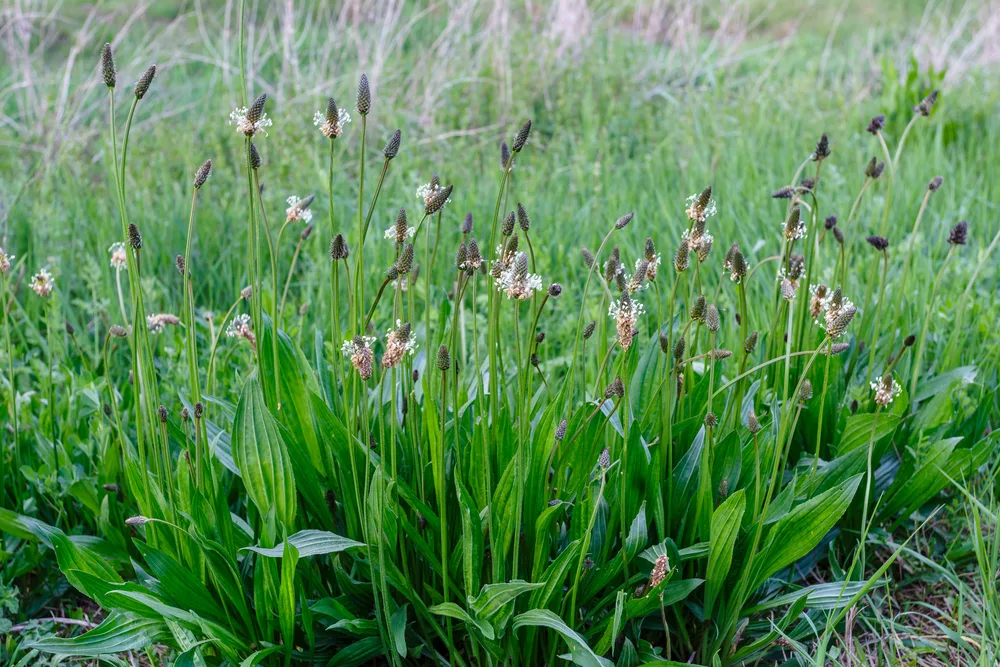
Can I say, once again, that I have another favorite plant? There are so many useful plants growing in our backyard, one more will be coming up – number 20 on the list.
Plantain is one of the many wild herbs that we use throughout the year, both ribwort and broadleaf plantain.
You don’t actually need to grow it, for it establishes itself and sticks around for several years in the same spot. The only requirement is, that you do not disturb the roots, or mow it to the ground every time. And most definitely let it go to seed – those are also edible.
I know, it is considered a weed, yet it is a very useful one that you should definitely get acquainted with. It is number one on my list.
Read more: Ribwort Plantain the Healing Weed from World Permaculture Association
18. Shasta Daisy (Leucanthemum x superbum)
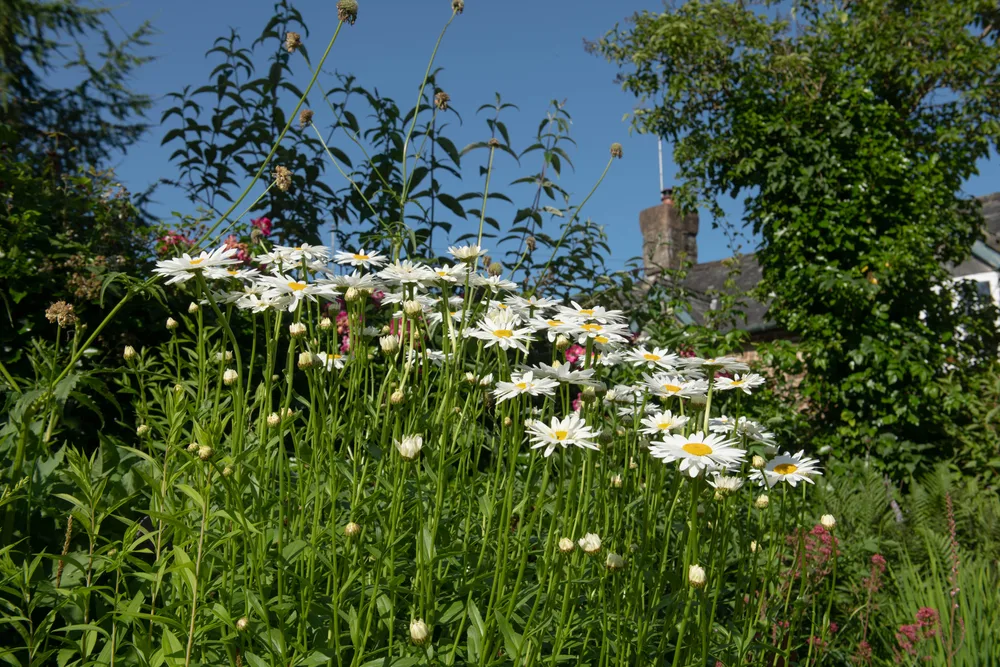
Not to confuse Shasta daisies with oxeye daisies (Leucanthemum vulgare), which can become noxious weeds, it is best to start with the best. The Shasta daisy has a root ball, whereas the oxeye daisy has a creeping root system.
Both have similar flowers, yet it is the Shasta daisy you want to plant in your garden.
Shasta daisies attract butterflies and beneficial insects, they are drought tolerant and deer/rabbit resistant with few insect problems. In short, they are easy to care for, mostly minding themselves.
Flowers are consistently white, with plants reaching a height of 1-3′. Plus, they greatly appreciate soil that is not overly rich. See, easy-going.
19. St John’s Wort (Hypericum perforatum)
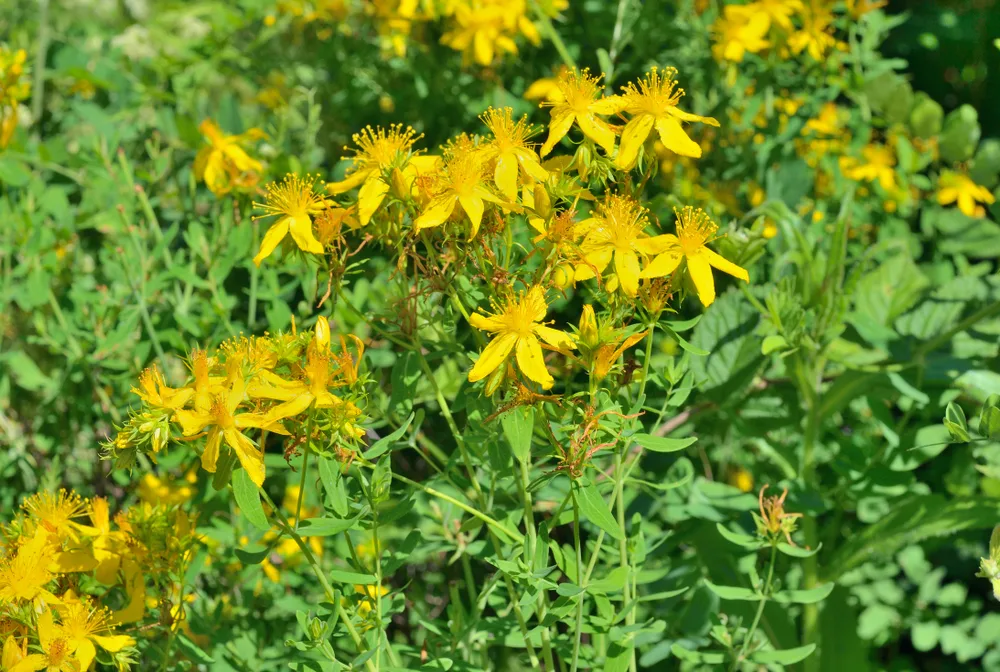
St. John’s wort is but one of the many plants that can help take care of you, as it is commonly used for bouts of depression and mood disorders.
More importantly, St. John’s wort is a charming plant that can help fill a gap in your landscape with bright yellow flowers which last from midsummer to fall. Seeing as how it is not picky with what kind of soil it grows in (sand, clay, rocky or loam) it may be able to grow where nothing else does.
It is both drought tolerant and able to withstand excess moisture, though you will want to make sure that it doesn’t get too much sun. A little afternoon shade would be beneficial in a hot, sunny climate.
St. John’s wort grows equally well in rock gardens, as it does in containers and on slopes.
20. Yarrow (Achillea millefolium)
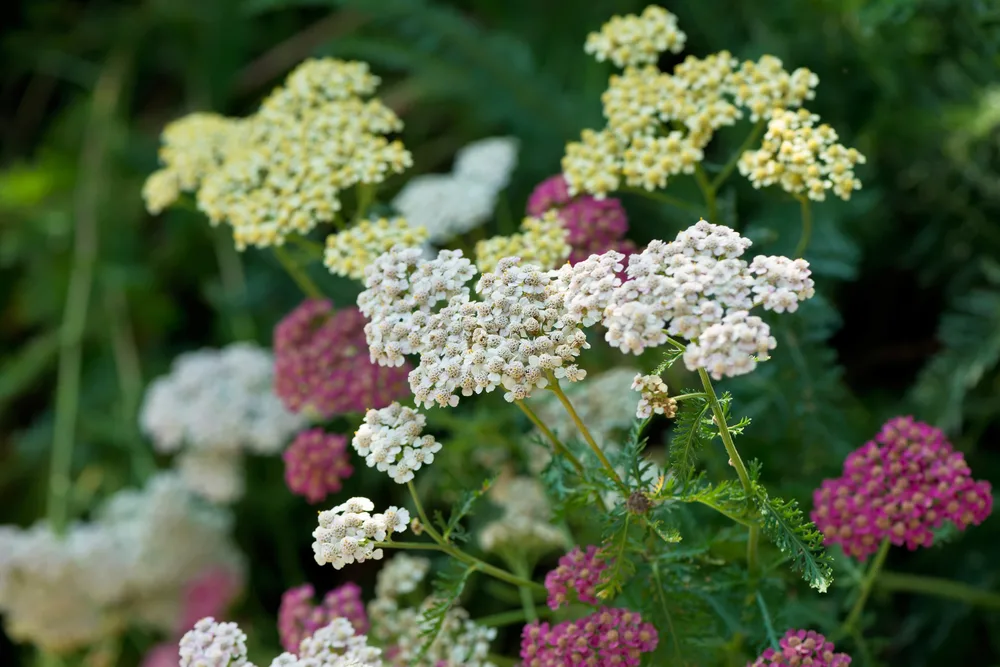
Yarrow is a beloved plant that grows on its own, where it likes, for as long as it possibly can.
It is a wonderful garden companion plant, you can tuck a flowery stem or two into your smudge sticks, and use it to attract beneficial insects to your garden. Not even to get started on its history and health benefits, we’ll have to save that for another article.
In essence, it is definitely uncomplicated to grow. You absolutely need a generous patch in your garden.
When it comes time to make compost, be sure to add it to the heap, as it brings beneficial nutrients to the surface. What goes around comes around. Make it as seamlessly sustainable as you can.
Growing Wildflowers in Containers
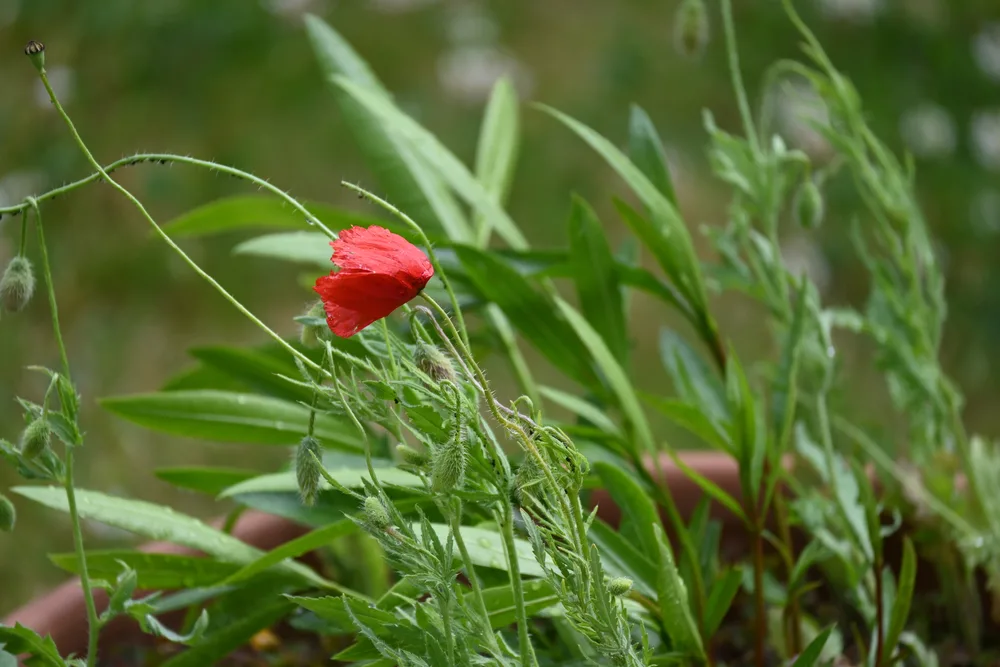
It’s true, that when we think of wildflowers, we often imagine wide-open spaces with colorful flowers gently swaying in the breeze. Yet, that is a picture book image we can change any time we choose.
One way to modify that image is to recreate a new kind of wildflower garden in real life.
How? With the use of terracotta pots and ceramic containers. In essence, wildflower container gardening.
It uses the same principles of vegetable/fruit container gardening, but adds an extra element of beauty to your backyard.
Although you may not be able to eat what you grow, many of the wildflowers can be cut for fresh and dried flower arrangements. A few of them may even have some healing and medicinal uses. Get to know each species individually and do your research before foraging your container garden.
If you lack space, yet desire a painted palette of delicate color, grow your wildflowers in containers.
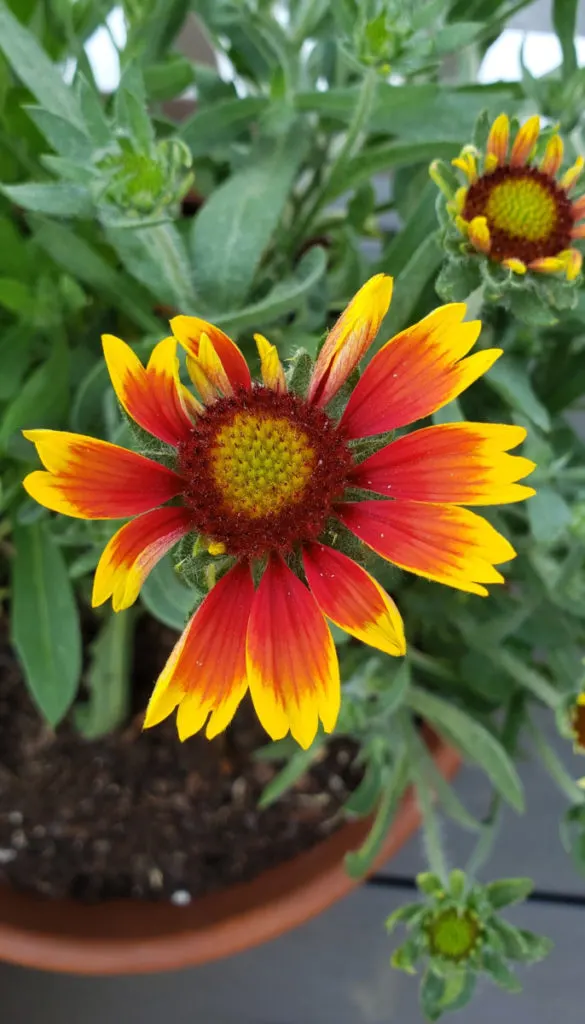
Dabbling in container gardening is not only a great way to decorate your patio for summer, you can also leave the dried stems and flowers for winter interest too.
All you need to get started with wildflower container gardening, is a series of pots with drainage holes in the bottom.
Next, you can add some lightweight gravel to help with drainage, topped up with potting soil and compost.
As with planting wildflowers directly in the soil, be sure to buy seeds from a reputable company. For the best success, seek out those seeds with a higher germination rate.
Always sow seeds that are a good fit for your growing region.
I know that sounds like common sense, but there are so many pretty flowers out there, that sometimes it is hard to choose. Your eyes may wander to interesting hues and more stunning flowers. And it is all too easy to get overexcited when purchasing seeds, especially if you get a bulk discount – or a free package of seeds to try.
Try, being the key word here. If you don’t plant anything, you’ll never know if it grows or not. Though there is something to be said for working with native plants that are more likely to survive and thrive in anything the climate can toss at them.
Watering your wildflower container gardening is easy and weeding it should take no time at all. A light layer of mulch will keep in the moisture and that’s about all you need to know.
To determine if you have a wildflower thumb, sow some seeds either in your hedge row, property line or specified garden beds. Patiently wait for them to emerge and blossom.
When they are at their peak, take photos and don’t forget to share your wildflower successes with others.

Get the famous Rural Sprout newsletter delivered to your inbox.
Including Sunday ramblings from our editor, Tracey, as well as “What’s Up Wednesday” our roundup of what’s in season and new article updates and alerts.

